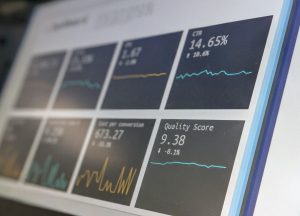Jack Blog
January 2nd, 2019 By Damian Ferrar
Brands have had a great time over the last few years; using data to create consumer insights and deliver clever ad campaigns. From Spotify’s “Thanks 2016, It’s Been Weird”, where they tapped into listeners’ data and humanised it with hyperlocal and relevant billboard ads, to Snickers in Australia who pulled a data-led number with ‘Hungerithm’, a campaign that made Snicker prices go down in 7/11 stores whenever Australian anger levels went up.
But it’s not all for laughs; another campaign in Australia saw the creation of ‘Graham’, a shocking artistic interpretation of what a human would need to look like — and evolve like — in order to survive a car crash. The sculpture was designed based on data harvested from road-safety history, medical research and the human anatomy.
But these ads are probably most suited to a demographic. Not an individual. And this is what we, as curators, designers and producers of brand experiences, are getting really excited about. According to IBM, we create 2.5 quintillion bytes of data every day — and 90% of the world’s data has been created in the last two years. This wealth of data gives us the opportunity to create more curated experiences, tailor-made for an individual rather than a demographic — while of course still respecting the ever-evolving conversation about data ethics and privacy. However, our techniques need to improve to deliver a real value exchange.
Canvas8 says that whilst 40% of people are happy to exchange their data for personalised advertising, 33% don’t accept it as a valid tactic and 22% find it outright creepy. People are actually dubbing data as ‘the new oil’; the world’s most valuable resource. And just like oil, it’s a matter of knowing how to work with it to turn it into actionable intelligence, rather than letting it turn into a threat of any sort. Simply reporting on it doesn’t mean a lot, but those combining it with creativity and technology to improve the lives of people are the ones most likely to succeed.
 Let’s look at some of the landscape shifts happening in this arena:
Let’s look at some of the landscape shifts happening in this arena:
Shift 1 / Machine learning & AI
From chatbots to voice assistants, early forms of AI are slowly becoming ubiquitous through our smartphones and in everyday life. According to Accenture, 54% of retail marketers are using AI to personalise content. This means that our expectations are constantly evolving, illustrated by the fact that 48% of people are frustrated when companies don’t deliver relevant or personalised experiences. Figures from Spotify show that 5 billion tracks have been listened to through its automated Discover Weekly playlist. There’s a significant gap between the marketing hype and the practical applications of AI, but this gap is closing all the time.
Shift 2 / Data visualisation
The more data we generate, the more important it becomes to be able to present that data in a meaningful and insightful way. Data visualisation is a powerful tool and the opportunity to analyse data is shifting from spreadsheets to interactive 2D visualisations and immersive 3D worlds that brings millions of data points to life in a way that can be intuitively explored.
Shift 3 / Power to the user
Data and privacy regulation are major priorities for governments worldwide. The introduction of GDPR in the EU has created a new norm that’s being adopted by start-ups and companies outside of its jurisdiction.
Beyond this, start-ups such as DataWallet and Wibson are envisioning a future where blockchain empowers people to be the brokers of their own data, sharing and even selling their information, with Wibson estimating that an average user’s data is worth a minimum of $240 per year.
Conclusion
Personalised marketing needs to evolve. With new companies stepping in to protect consumer’s data, brands need to do more than just chase consumers around the internet with items they’ve recently browsed. We need to hit the mark by offering meaningful value; otherwise we’re going to be frozen out.